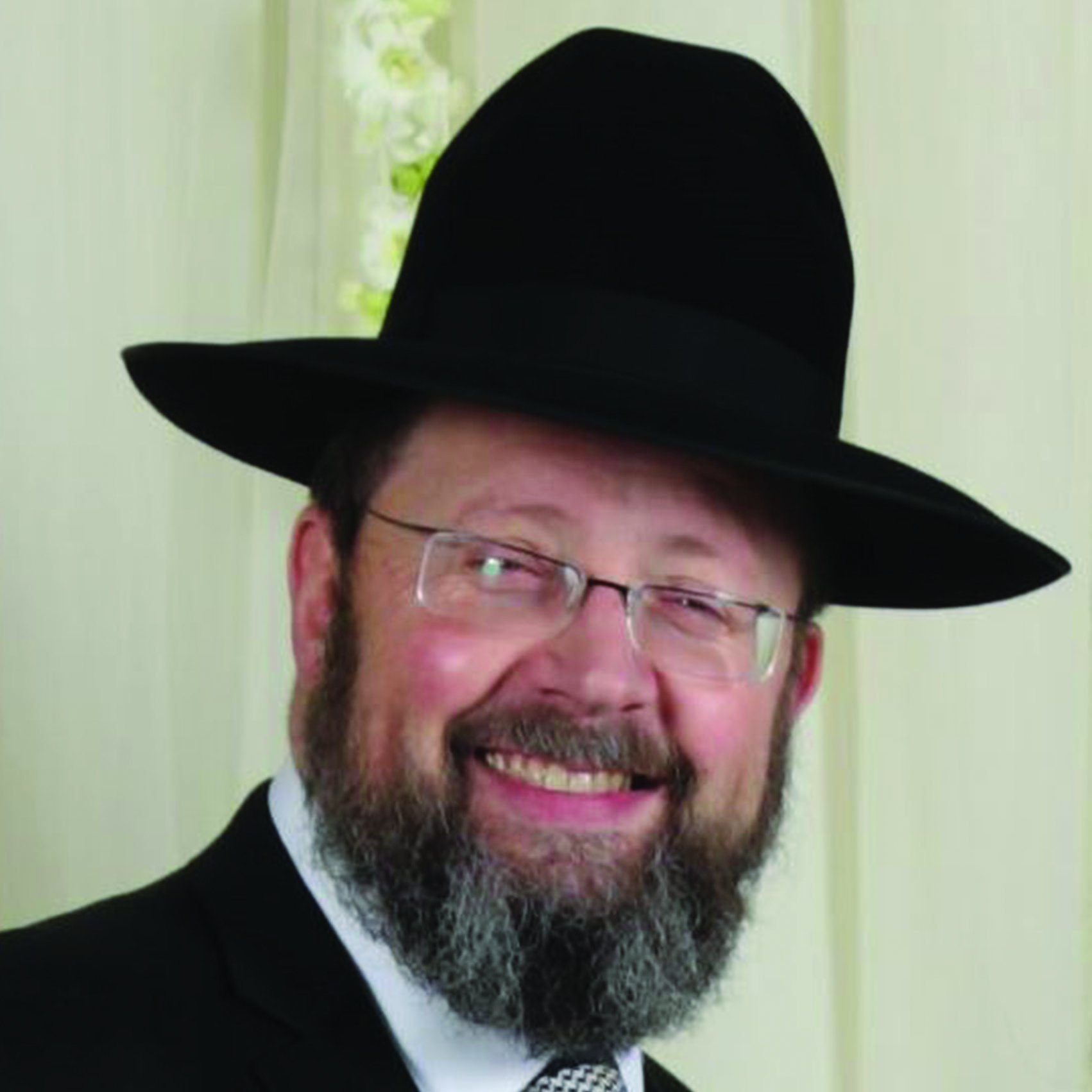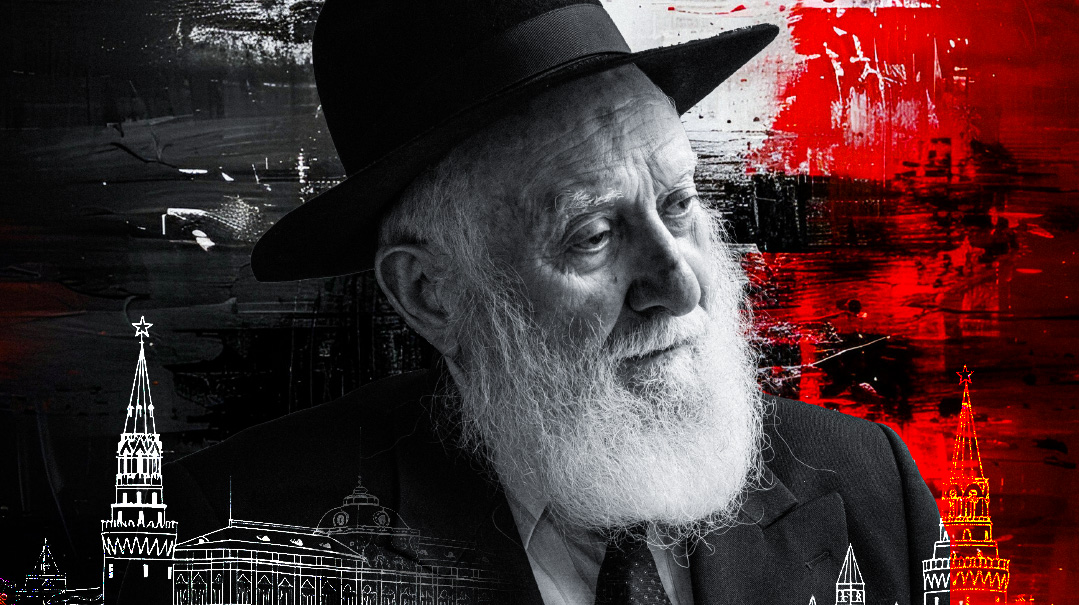Dividing Lines

Can a new push for a halachically compatible prenup put an end to the tragedy of agunos and often vicious divorce proceedings that drag on endlessly, causing untold pain and hurt?

A young woman stood facing a man a few feet from her.
Her hands were cupped together as if to receive something. She looked up in his face, tears escaping her eyes, and he looked back at her and declared, “Harei at…,” and then dropped something into her hands.
But the setting was not a wedding hall; it was a beis din near Monsey. And the “harei at” was not followed by “mekudeshes li” but by “muteres lechol adam.” This act — the reverse image of their kiddushin some ten years earlier — brought a final closure to the idyllic dreams and aspirations of a young couple whose lives were ahead of them.
Yet, under the circumstances, it was a best-case scenario.
After struggling through years of strife, the couple had gone to therapy but both agreed that they could not reconcile their differences. They showed up in the beis din a mere five hours earlier, without any “to’anim — i.e. beis din lawyers.” The wife had brought along her friend, and the husband, his father. There were no acrimony, no exorbitant costs, no extended proceedings. Just a beis din-appointed mediator for each spouse and quiet negotiations. An agreement was reached; papers were signed and notarized. A get was written and given, and as painlessly as is feasible, the couple moved on to the next chapter of their lives.
But how often is this not the case? How often do divorce proceedings extend endlessly as hostility and costs spiral out of control, as the only winners are the lawyers, and the most tragic losers are the innocent children caught between parents who, due to the extended proceedings, can no longer work together to ensure that their one common interest retains some shred of innocence and stability.
And that pain pales compared to an even more tragic circumstance: when a get is never procured, where a spouse is left in limbo, in a permanent state of separateness, because of the partner’s unwillingness to give or receive a get.
It should be noted that the cherem enacted by Rabbeinu Gershom over a thousand years ago evened the playing field to some degree regarding an intransigent spouse: Rabbeinu Gershom prohibited both bigamy and divorcing a woman against her will. This means that, while there’s a general assumption that the man has the upper hand when it comes to giving or withholding a get, a woman who refuses to accept a get effectively prevents her husband from remarrying — and a heter mei’ah rabbanim permitting him to take another wife under such circumstances is very difficult to secure.
Still, in the majority of cases, it’s the husband who is unwilling to give a get, resulting in the wife being an agunah, literally “chained” to a man who refuses to free her. For a get must be given willingly — otherwise it is referred to as a “get me’useh” (a coerced get) and is invalid. Even if the get was coerced because of a monetary consideration — i.e. the husband is giving a get to avoid a fine — the get is still invalid. Now, under very specific conditions, a beis din may coerce a husband to give a get, and in such cases, the husband is forced to say “rotzeh ani — I want to give the get,” but practically that “acquiescence” is difficult to procure. In Eretz Yisrael the government backs beis din and will imprison a recalcitrant husband unless he complies. In the US, however, beis din can only enforce their ruling through physical force — which is illegal according to secular law, as was made all too obvious in a few headline-making cases that rocked the Orthodox community several years ago.
The Time is Now
Twenty-five years ago, the Rabbinical Council of America, at the initiative of Rav Mordechai Willig, introduced a “halachic prenup” — a prenuptial agreement created to help resolve the agunah problem. This innovation, which received the halachic approval of many leading poskim, including Rav Ovadia Yosef, and yibadel l’chayim tovim, Rav Zalman Nechemiah Goldberg, Rav Asher Weiss, and Rav Gedaliah Schwartz among others, essentially states that the parties submit future disagreements relating to the get to the Beth Din of America. In addition, if a couple separates, the husband is obligated to pay his wife $150 daily in lieu of his halachic obligation of support. This amounts to about $55,000 annually.
Although a fine — even a self-imposed fine — may create a coerced get that would be invalid (according to some opinions), in this case, the $150 is not a fine but is rather “mezonos,” the daily maintenance that a man owes his wife , as stated in the kesubah. (At the same time, he relinquishes all rights to her income.)
This prenup has been accepted as the norm in Modern Orthodox circles and according to Rav Shlomo Weissmann, director of the Beth Din of America, it has been nearly 100 percent effective in preventing agunos. Now, several organizations are attempting to create a similar initiative within the chareidi sector. In a recent “Chazaq” shiur (posted on TorahAnytime), Harav Shmuel Fuerst of Chicago explained:
“When the RCA produced the prenuptial agreement, the Modern Orthodox camp felt it was very much necessary. At that time, the chareidi community felt that they were not holding there yet. However, it is now 25 years later, and the consensus of many gedolei rabbanim and gedolei roshei yeshivah is that the time has come for a prenup [to become enacted] in the chareidi community as well… There are more divorces and sh’eilos of agunos than ever before. There are men out there who are holding back on a get simply out of rishus — people try to speak to them and they get nowhere. Sometime the family is with them, sometime they are against them… My rosh yeshivah, Rav Avrohom Chaim Levine ztz”l, had told me that the prenup is very much needed. Rav Shmuel Kamenetsky has told me that it is very much needed. Even though the RCA prenup is 100 percent kosher — it has the haskamah of Rav Zalman Nechemiah Goldberg, that it is not considered a ‘get me’useh’ — there are angles being worked on now that are a bit different, so that everyone — even the objectors — would be in agreement. There are a number of lawyers and rabbanim that are working on it….and [I predict that] in a very short while, the chassidish world will have to do it as well.”
Rav Fuerst was referring to two such initiatives — one spearheaded by the Yashar Coalition, led by Eli Goldbaum and veteran divorce attorney Martin Friedlander; and another by the av beis din and founder of Vaad Hadin L’Horaah, Rav Avrohom Kahan.
No To’anim Allowed
I meet Rabbi Kahan in his beis din in New City, where I’ve just witnessed a relatively hassle-free get. An aura of efficient professionalism pervades the offices — several conference rooms and the official beis din chamber — as the young staffers converse in hushed tones with a focus that reflects the mindset of the founder. It’s not my first time meeting the young, 30-something dayan, yet his energy and drive never cease to amaze. Rav Kahan dreams of solving not only the agunah crisis but a host of problems plaguing the beis din system in the US — problems that greatly exacerbate the agunah issue as well.
I asked Rav Kahan how we can create a system where every get proceeding and negotiation is executed in such a civil way.
“Unfortunately,” he responds in his trademark, rapid-fire delivery, “it’s practically impossible to ensure that every get proceeding works out that way. You see, there are four primary problems in batei din nowadays: to’anim, zabl”a, lack of oversight, and cases that never end.
“To’anim, rabbinical court pleaders, are very well-compensated lawyers who know all the tricks of the trade, and how to exacerbate and prolong dinei Torah. They advise their clients in various ways that may be beneficial to them in the short run, but which certainly undermine the system, and are often detrimental to their clients as well in the long run. I mean, what are the chances of divorced parents coming to a settlement that is beneficial to the children after they have been at war for so long? In these extended cases, the goal becomes winning, beating your ex-spouse, and all common sense goes out the window. One woman was exultant as she told me that she won her hard-fought court battle and her husband now has to give her an extra 80 dollars a month in child support. I couldn’t help pointing out that this victory cost her 450K in lawyers’ fees, so it would take her about 450 years to break even. But it’s all about winning, so she won.
“Secondly,” Rav Kahan continues, “the zabl”a system is where each party chooses one dayan and those two then choose a third. It’s not supposed to work this way, but inevitably each dayan represents ‘his’ client and the third dayan decides. It’s not a system that inspires confidence, and it generally creates more friction than it resolves. Rav Shmuel Wosner (Shevet HaLevi 8:300) addressed this matter in a far-reaching teshuvah, where he denounces the practice of zabl”a in our days for the same reasons I just mentioned.
“Thirdly, since batei din have no oversight, the losing party, and many times even the winning party, feel that the beis din was corrupt.
“Lastly, since dayanim are generally paid per hour or per sitting, the litigants feel that the dayanim are allowing the case to drag on — and in fact, they are incentivized to do so.”
Rav Kahan explains how his beis din addresses these elements. Procedurally, he says, there are two main departments: the beis din department and the mediation department, each of which complement and assist each other to comprise an effective and streamlined procedure.
“When a couple first contacts us, each party is put in touch with a mediator,” he explains. “The mediators take a detailed intake during which they assess the possibility of reaching a settlement via mediation. If they indeed believe it possible, which is often the case, they schedule a mediation session. If, however, the mediators sense that a din Torah is the only solution, they each will begin assisting their party with din Torah preparations. No to’anim are allowed — although licensed attorneys are allowed as required by law. If a party requires assistance in formulating their claims before the beis din, the mediators are there to help them prepare. If the litigants wish to speak to a to’ein before they come to us, that is their prerogative, but to’anim are not allowed in the building. In divorce cases we provide each spouse with a mediator to explain and represent their side at the court case, which occurs that same day. And there is no choosing of dayanim. We have our own regular dayanim.
“Additionally, we charge a set fee per divorce proceeding no matter how long it takes us, but 95% of the case are settled the same day. Our team of mediators is extremely dedicated. They often sit through the night to ensure that a resolution can be made as quickly as possible to avoid any potential issues of igun. We then have an in-house lawyer draft the settlement agreements to make the mediation or an arbitration ruling legally binding.”
All the beis din’s decisions are subject to an oversight committee of noted dayanim in Eretz Yisrael, including Rav Mendel Shafran and Rav Tzvi Gartner among others. Additionally, there is a committee of balebatim and askanaim, who ensure that the beis din follows its own procedural guidelines.
“All this,” says Rav Kahan, “creates a sense of accountability and focus.”
Catch Them at the Start
So that is why the Vaad Hadin is so effective — once the case is in their door. But how to get both parties to agree to participate in mediation or a din Torah in the first place? Once a couple is already contemplating divorce, the emotions and tensions are so high that it’s difficult to even get them to agree about which venue to go to resolve their disputes.
Rav Kahan has a solution: “The only way to ensure such outcomes would be to have every couple sign a document before any issues arise.”
He’s talking about a prenup, but his innovation is actually a “postnup.” He leans forward toward the screen on his desk and clicks onto a host of documents related to the agreement.
“So here’s the story,” he says. “Once we have the couple in the building and they are using our system, 90 percent of the battle is over. The problem is getting them into the building. Our idea is this: In the vast majority of divorces the couple will initially approach their rav with a problem, and at that point they’re willing to try and see whether something can work out. They are, to some degree, willing to contemplate or make a show of reconciliation. Our hope is that rabbanim will ask them at that initial meeting to sign a ‘postnup,’ which simply states that if the reconciliation does not work, they will appear before our beis din — or any beis din that follows our procedures — with the stipulations that if not, there will be a monetary penalty. The couples will sign, because at this juncture, they are both trying to show that they are the reasonable ones.”
But wouldn’t it be better to get every mesader kiddushin to have couples sign this agreement before their wedding? Wouldn’t that help streamline the process later on?
“That is the hope,” Rav Kahan says, “but it’s not our main focus right now. Currently, we’re focusing on getting the rabbanim and therapists who deal with shalom bayis issues early on, to have the couples sign.”
So how does his prenup/postnup ultimately get a reluctant husband to give a get? Where’s the “teeth”?
Rav Kahan explains that the beis din can assess a monetary payment, based on a ruling that a recalcitrant husband (who is causing his wife to be a “meukeves le’naseh,” preventing her from remarrying) has a monetary obligation to mezonos (support). This obligation can be legally and halachically imposed. [The details of this obligation are too intricate for this article. —Ed.]
The Vaad Hadin’s initiative aims to address not only the couple’s appearance before beis din, but also many issues with batei din once there. The beis din chosen in the agreement must not allow to’anim, must have a flat fee, must offer mediation and have oversight. Additionally there is an enforceable mezonos fee (though it is not fixed, as in the case of the RCA agreement).
“In contrast to the RCA prenup, the mezonos is not fixed at $150 per day, but is contingent on the norm for that particular couple, as assessed by beis din,” says Rav Kahan. “This factor greatly minimizes any argument of asmachta (a conditional commitment or promise that a person makes but actually has no intention of keeping) that the husband is accepting upon himself.”
By crafting his agreement to avoid a fixed mezonos amount, Rav Kahan circumvented one of the objections to the RCA prenup. His agreement also diverges in that it does not demand that the couple must appear before an RCA beis din in case of marital discord, something not all kehillos are comfortable with.
Signed and Sealed
I next turned to Rav Shlomo Weissmann, menahel of the Beth Din of America, who is excited to speak about the success of their prenup over the last 25 years. “When the RCA introduced the document it seemed like an elegant solution to a very challenging problem, but even the prenup’s most ardent supporters couldn’t be sure that it would work in real life and prevent actual cases of igun,” Rav Weissmann says. “But, baruch Hashem, we can now report that the agreement is a regular feature at weddings and many RCA rabbanim insist that couples they are marrying sign it. It’s resulted in the near disappearance of agunah cases among couples who utilize it.”
In fact, Rav Weissmann remarked that the agreement is so successful that his beis din — which also don’t allow to’anim — almost never needs to actually enforce it. The fact that a divorcing couple knows they signed a prenup means that they just schedule a get as part of the divorce process without fighting about it. “The chiyuv mezonos in the document creates a halachically appropriate cost to the husband if he insists on staying married,” says Rav Weissmann, “so holding up the get is the last thing anyone wants to do.”
Rav Weissmann recalled an incident that took place about three years ago, with a woman about to get married for the second time. “She wasn’t observant, and was a few weeks away from her wedding, when the Orthodox mesader kiddushin pointed out that she was halachically prohibited from getting married, since she had never gotten a get from her prior husband. Her first marriage had also been performed by an Orthodox rabbi, and she was fortunate that she had signed our prenup. She called our beis din, and I immediately reached out to the ex-husband.
As soon as he opened his mouth I realized that he had many hard feelings about their divorce, and he was not about to do her the favor of giving a get, let alone quickly enough to allow her to remarry as scheduled. I told him I was sympathetic to his feelings, and then I gently told him about the prenup he had signed, and that our beis din might very well order him to pay mezonos to this woman, who was technically still his wife — and that our order would be enforced by the New York courts.
About two hours later this fellow called me back and said he had spoken with his lawyer friend who told him it wasn’t worth the possible legal exposure to hold back a get. He worked near the New York Public Library, and we met him there a few days later so that he could authorize a get.
“No society can function without courts that ensure people do the right thing,” Rav Weissmann continues, “but unfortunately we’ve become accustomed to a severe erosion of the authority of rabbanim to ensure that people act decently in a divorce situation. The real power of the prenup is that it restores the beis din’s authority to ensure that Jewish marriages are appropriately dissolved when they need to be.”
Rav Weissmann acknowledged that chareidi communities, by and large, have not insisted on couples signing a prenup, and that until very recently there was not much attention paid to it among chareidim. But he also said that he senses a change. “People call me all the time asking, ‘How can we get this into our communities?’ ” he says, “so a few years ago we tried to expand the number of people who would be comfortable signing it by creating a version of the document, available alongside the standard version at www.theprenup.org, that names specific dayanim who will sit on the case if the couple ever needs a get: Rav Shmuel Fuerst, Rav Reiss, and Rav Mendel Senderovic.”
The Real Losers
Two men have taken that nebulous sense of change and made it a burning mission. Yashar Coalition, founded by Flatbush businessman Eli Goldbaum and family lawyer Martin Friedlander, wants to see a prenup agreement signed before every Jewish wedding.
Eli learned firsthand about the painful system of a protracted and acrimonious divorce proceeding through the divorce of a family member. He describes the education he got working through the labyrinth of confusion and ignorance in obtaining a get, and settling the various financial and custody issues involved in the divorce process.
“It was a horrible experience, and after going through it personally, I decided to help others navigate their divorce in a way that minimizes the tzaar,” Eli says. “Because the real losers are the children, who as a result of the extended fighting are often alienated by one of their parents — either the father or the mother. The trauma is terrible. Every other week I have someone here, sometimes couples, seeking advice how to get through the process. There is such a thing as a ‘good’ divorce, and when that happens the children are spared. But it’s far too rare.
“I estimate that there are about 7,000 heimish marriages each year — you can make a cheshbon by considering the wedding halls — and conservatively, five percent will end in divorce. So what is that? Let’s say it’s 300 divorces, and at least half of them will be ‘bad’ divorces, where not only do the kids of the divorcing couple suffer, but those of the extended family can suffer as well, as their parents and siblings become enmeshed in the bitterness.”
As a family lawyer, Martin Friedlander sees the ramification from the other side, from the huge backlog of divorces that are flooding the court system.
“The judges are overwhelmed and they are begging us to settle without them,” he says. “And because they are so backlogged, the divorces drag out endlessly, causing more and more hurt, and making it so much more likely that the children will suffer.”
Eli explains the dream behind his newly formed Yashar Coalition. “When Dor Yehsorim first started some 30 years ago, there was much skepticism and suspicion. People were asking things like: Why should I find out if I have genetic defect? And the system will work only if everyone else does it also, because otherwise how do you determine the match? But it was an idea whose time had come and eventually it became standard. You get to the ‘parshah,’ you take the blood test, you’re assigned a number, and you check out the compatibility before you even go out. It has largely eradicated Tay Sachs and some other diseases.
“My hope is that the same will happen over the next ten years with prenuptial agreements — that they’ll become routine,” he says. “A few days before a couple a gets married, the mesader kiddushin or another knowledgeable individual will sit down with the chassan and kallah — Rav Elyashiv insisted that the agreement not be done on the day of the wedding — and they will sign a prenuptial agreement. We are convinced that it will do wonders in speeding up the process if a divorce becomes necessary.”
But the very idea of a prenuptial agreement is likely to make the starry-eyed young couple queasy. How, they say, can we even consider divorce right before we get married? “Well,” says Eli, “the kesubah is really a document that addresses the possibility of divorce, and you cannot get married without one.”
He’s right, although most of us consider the kesubah to have more positive connotations. “Whenever I see a fancy kesubah hanging on the wall,” I quip, “I wonder if people realize how unromantic a document it is really is. It basically says that if the marriage ends by death or divorce the wife will get money and support. No soft violins here.”
“But in fact,” Eli counters, “it really strengthens the relationship because it addresses the worst-case scenario and gives the woman security. We are essentially doing the same with the prenup. We’re saying that if the relationship has to end, the couple will still be decent with one another and spare themselves and more importantly, their children, undue heartache.”
Eli and Martin have been working with rabbanim over three years to get their initiative going. Rav Shlomo Miller and Rav Hillel David have invested many hours together with them in drafting the actual agreement. Their prenup document aims primarily at getting the couple into a competent beis din in an expeditious manner. At the time the prenup is signed, the couple chooses a beis din that will arbitrate the case. If one spouse sues for divorce, the other must appear in that chosen beis din within two weeks. This agreement is binding and is legally enforceable if one of the parties fails to appear before beis din. In addition, this agreement refers to all financial, custody, and religious observance issues that have become the battleground of so many of the cases today. It also includes a protocol for religious observance (which is helpful for custody questions when one spouse becomes lax in observance).
However, as opposed to the RCA prenup and the agreement of Rav Kahan’s Vaad HaDin — which are very specific as to which beis din is acceptable (with the RCA’s prenup, only RCA batei din are acceptable, and with the Vaad HaDin’s “postnup,” compliance with the Vaad’s strict policies are necessary) — Yashar’s agreement allows for a broad roster of batei din, provided that they comply with a list of protocols regarding proper beis din decorum. The Yashar agreement also includes protocols for religious status. By offering a wider range of batei din possibilities, Yashar feels that their draft is likely to become the standard.
Across the board, there is a general feeling coming from rabbanim, batei din, and laymen alike that the time has arrived for concrete measures to expedite the appearance before beis din and fairness and efficiency once there.
“All in all, the RCA, Rabbi Kahan, and Yashar are all working to solve this unfortunate problem,” says Eli Goldbaum. “We each have our angle, but we all agree that it is vital for one of these solutions to be used before every marriage. Whichever agreement is utilized, it’s crucial that we reduce a large chunk of the pain currently associated with divorce.”
Note: Obviously, an article dealing with such a halachically intricate topic can only scratch the surface of the issues involved. The point is to note the growing trend, raise awareness, and further a conversation whose time has clearly arrived.
“Once we have the couple in the building and they are using our system, 90 percent of the battle is over. The problem is getting them into the building”
—Rav Avrohom Kahan
“The real power of the prenup is that it restores the beis din’s authority to ensure that Jewish marriages are appropriately dissolved when they need to be”
—Rav Slomo Weissmann
(Originally featured in Mishpacha, Issue 788)
Oops! We could not locate your form.












